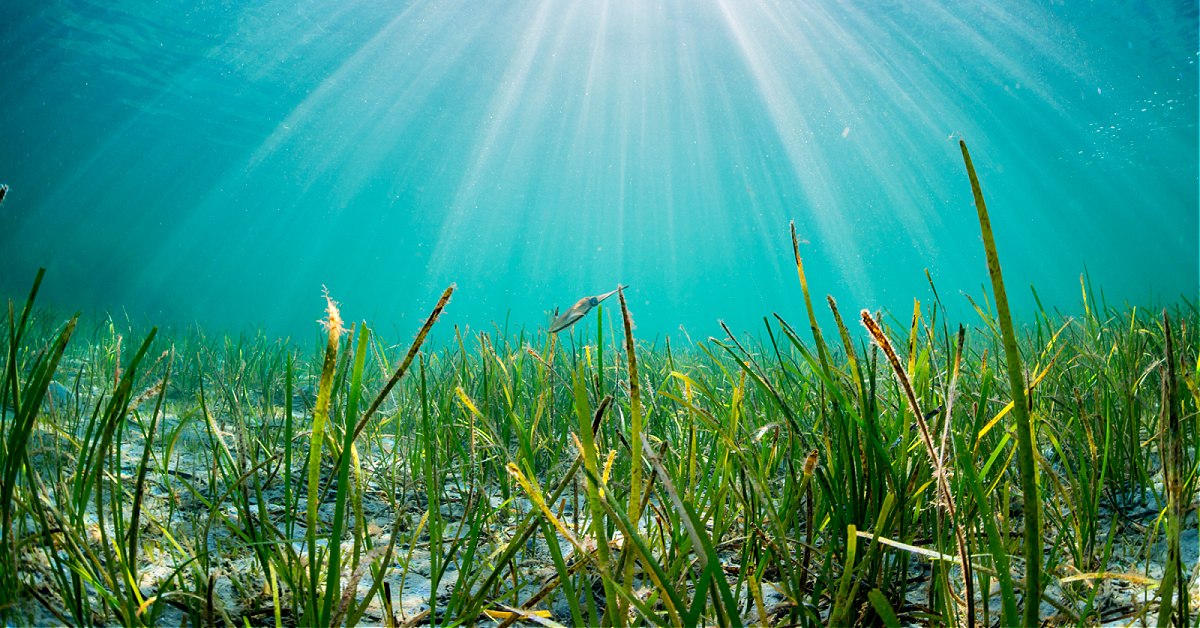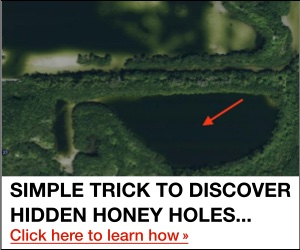The Truth About Seagrass Kill Off
- By: Joseph Simonds
- on

Why do we continue to address the truth about seagrass kill off?
You may not realize it, but seagrass growth contributes to and plays a part in the life cycle of fish and other marine life in our ecosystems.
In this episode, we are talking with Seagrass Expert Savanna Barry from the University of Florida that has been studying seagrass for over a decade.
The goal of this podcast is to spread awareness and motivate anglers and communities to make a change and contribute to the positive growth and development of seagrass in the future.
We’ve got you covered below!!!
You can watch the video version of this podcast below (which I highly recommend), listen to the audio version by clicking the play button underneath it, or listen to it on iTunes, Stitcher, or Spotify.
P.S. Don’t forget to subscribe on iTunes, Stitcher, or Spotify and leave us a review!

The Truth About Seagrass Kill Off [PODCAST]
Note: Don’t forget to subscribe to the Salt Strong podcast on iTunes, Stitcher, or Spotify and leave us a review!

Related Podcasts:
Related Resources:
- Florida Seagrass Analysis
- Be Seagrass Safe
- Will YOU Pledge To Be Seagrass Safe?
- Marine Habitat Restoration (Seagrass – Florida Master Naturalist Program)
Here is a timestamped version:
- 1:30 – Savanna Barry joins the Salt Strong Podcast
- 3:53 – Why is this an important issue?
- 7:34 – Water Clarity (Importance of Sunlight)
- 9:12 – Why are we seeing all of this seagrass die-off?
- 11:39 – Relationship between Water Quality and Water Clarity
- 14:53 – Current State of Tampa Bay (Lessons learned)
- 18:26 – The True Impact of Fertilizers & Where Storm Drains Lead
- 21:26 – Restoration & Re-Planting Seagrass
- 27:27 – The Process of Planting Seagrass
- 33:25 – Where do we begin???
- 38:35 – Seagrass Growth & Limitations
[optin-monster slug=”wcrcrc7d6ih5k29wooi4″ followrules=”true”]
The Truth About Seagrass Kill Off [VIDEO]


Conclusion

Seagrass is vital to sustaining marine life in our inshore saltwater environments and ecosystems.
It is no surprise that harmful chemicals and materials used in fertilizers and heavy-duty cleaning products cause direct harm to the seagrass which then affects manatees and fish and so on.
Please share with us your own personal thoughts and comments down below!
Do you have any more questions on the truth about seagrass kill off?
Let us know down in the comments section!
And if you know someone who wants to learn more about the truth about seagrass kill off, please TAG or SHARE this with them!
P.S. Want access to our best fishing spots and tips, plus discounts to our online tackle store? Click here to join us in the Insider Club!
Related Articles:
Related categories:
STOP WASTING TIME ON THE WATER!
Do what the “SMART ANGLERS” are doing and join the Insider Club.
Here’s what you’ll receive today when you join:
- Weekly fishing reports and TRENDS revealing exactly where you should fish every trip
- Weekly “spot dissection” videos that walk you through all the best spots in your area
- Exclusive fishing tips from the PROS you can’t find anywhere else
- Everything you need to start catching fish more consistently (regardless if you fish out of a boat, kayak, or land).













Went fishing last week in St.pete at one of my usually very productive fishing spots and there was a green algae all over the sand that’s usually clean. All of the shallow water seagrass was Dead and Brown! I can usually make one cast and have enough bait to fish the day out. This timeI didn’t see bait anywhere on the flat. I went over to the seawall by a drain and saw a few small fish , threw my cast net and they turned out to be Tilapia! This was the first time in my know history of tilapia ever being out there and I’ve been fishing there for over thirty years! City run off is THE PROBLEM. NOT MANATEES!!!!
We need about a million bumper stickers for Florida fisherman: “As the seagrass dies, Florida dies!”.
The future of our environment and our economy is closely tied to this issue. We can call it a grassroot campaign. (Yes, pun intended)
Good subject, Do they have a map of the seagrass loss in like the Lemon Bay Area of Englewood Fl. which appears to have significant loss south of the Manasota Key Bridge?
Thanks
Charles is on it. Some form of slow flushing action is needed as part of a total healing process. It’s the quickest way to clear water, thus helping the grass. This is not difficult to do.
Nobody wants to hear the truth, but here it is, if you put cows or horses on a pasture, and the grass disappears, where did it go, let’s blame the climate, not the animals eating it,
The manatees are eating the grass, I’ve been fishing the gulf for 60 years, we now have more manatees then ever before, years ago we never seen a manatee, they pull the grass out by the roots, it can’t grow back, same as what a horse does.
Get rid of the manatees and watch what happens, can’t blame the fertilizer, because all up the west coast of Florida does not have homes on the water, and the problem is only where we have manatees.
A great discussion overall. I wish there would have been a deeper dive about water quality & clarity. If seagrass planting is usually not effective until water clarity is improved, how does that improve in the IRL when there is legacy sediment that’s stirred up by wind that blocks the sunlight? Chicken & egg debate.
Listening to the Tampa Bay collaboration between the public and private sectors over a long number of years, I didn’t get the impression this important step has come together, and perhaps organizing a symposium of state, county and local officials laying out their current and future commitments would apply public pressure if others like SS, Captains for Clean Water, etc. made this available to their followings. This approach galvanized action to preserve the Loxahatchee River in Jupiter, FL which was spearheaded by the formation of the River Coalition in 1998 (search Loxahatchee River Coalition). An issue I’ve seen over the years is that groups form collecting money from gov’t. grants and public donations for their cause but don’t organize into a large collective effort with a consistent message and of sufficient size to pressure politicians and govt. entities. Captains for Clean Waters and others have followed this model for moving water south to the Everglades National Park but their focus has not been on the IRL.
I was surprised there was no mention of manatees impact on sea grass and future restoration since an entire podcast was dedicated to this subject a few weeks ago.
Many many years ago I could have started another inlet south of the last station @ the beachside in NSB by trenching a 6ft groove from east to west on the dunes during a hurricane & it would have ran all dwn hill to the mosquito lagoon. & I wonder many times if I had done that would that have saved the lagoon..I believe if they would installed giant tubes or pipes(in that South area) or just a controlled inlet to regulate the flow & cleaning action that the lagoon badly needs it could clean & flush the lagoonThis area has no real flushing action & years of pollution & migratory birds .& manatees have really caused its demise .I think manatees eat 200lbs of grass a day so how much area is that comprised of .I live on a canal & you can’t believe how much poop comes floating by @ first I thought it was human till I disected it -Well at 85 yrs old I have seen the best of the lagoon & have caught African pompano & many strange species & I still fish but its not like it used to be ..Keep up the good work guys & keep the faith knowing some young guy is depending on the older gen. to show the way .God Bless Charles Wessler
Those manatees and birds were there since the beginning of time and yet when the population exploded around there the last 50 years then everything started to die off. I hope you see the connection
Your right, nobody wants to say that, because of the kick back, but it’s the truth
Charles, since seagrass has died off in the areas near the inlets, I guess the solution is to dig out wider and deeper inlets to flush more polluted water into the ocean. That’ll restore the seagrass.
Salt Strong rocks each and every day! this is just another awesome example of how the members of this online fishing club benefits from Salt Strong concerns for improving the environment that supports our fisheries. In this recent series on seagrass, the discussions have bettered our understanding of the problems of water quality as it relates to seagrasses (and their loss). In this episode, we see the circular nature of cause and effects in such a way that our members can easily understand and make personal decisions to better the situation. Long road ahead because nothing happens overnight, but the future is bright for seagrass and cleaner, clearer waters if we start making these small steps forward now. Excellent discussion … thanks to Savanna, Justin and Joe. WELL DONE! and love the big words …